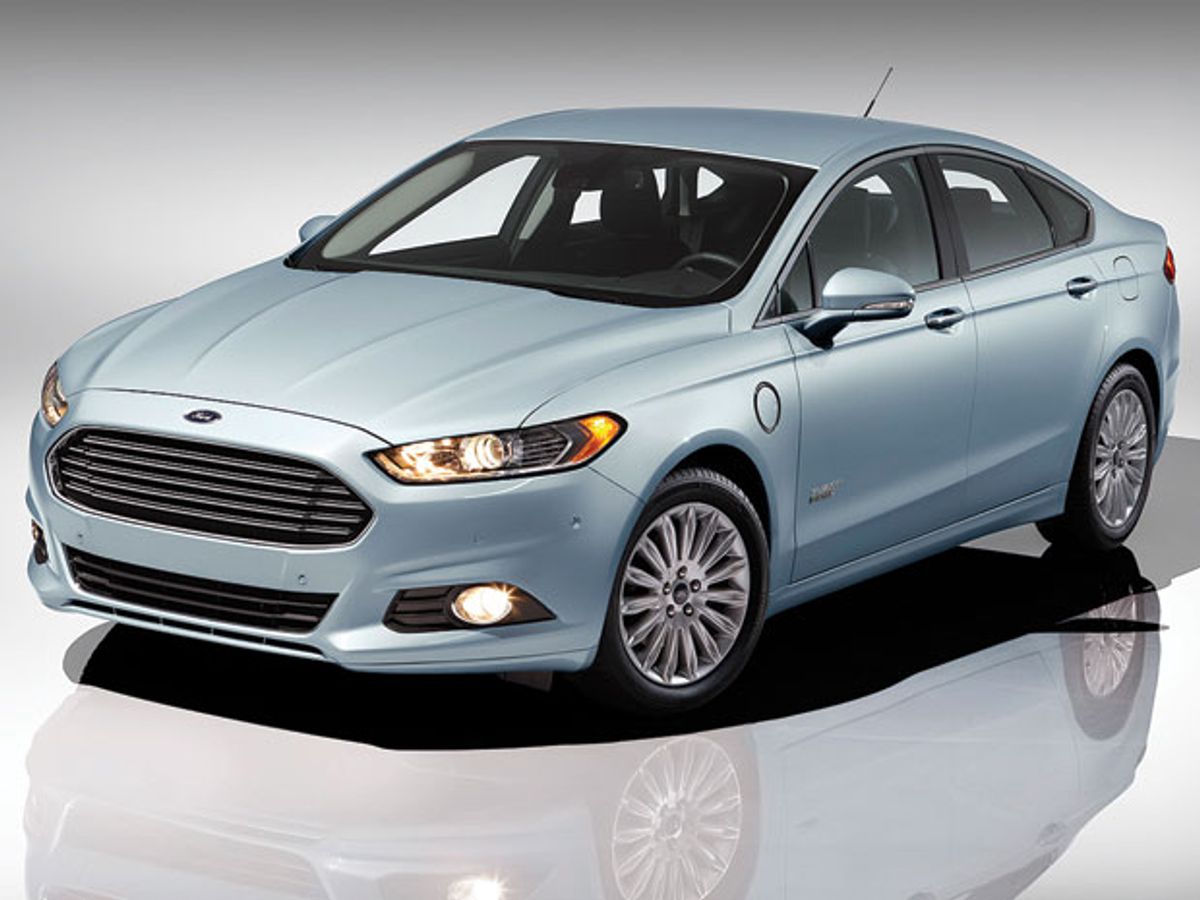Top Tech Cars 2013: Ford Fusion Energi
Ford hits the magic mark: 100 miles per gallon

Toyota may have been synonymous with hybrids, but Ford is finding strength in numbers—fuel economy numbers. With more style and sport than the Toyota Camry Hybrid, the Fusion Hybrid also beats the Camry in fuel efficiency, with 5 liters per 100 kilometers (47 miles per gallon) in both city and highway. Now a plug-in version, the Fusion Energi, becomes the first production midsize car to hit the magic 100-mpg mark (2.4 L /100 km).
The United States’ Environmental Protection Agency says the Fusion Energi returns the gasoline equivalent of 2.2 L/100 km (108 mpg) in city driving and 2.6 L/100 km (92 mpg) on the highway, for 100 mpg overall. That tops a pair of smaller rivals, the Chevy Volt and Toyota Prius plug-in, and even some pure electric cars, including the Tesla Model S.
For both the Fusion Hybrid and the Energi, a 2.0-liter four-cylinder seamlessly mates with an electric motor to produce a total of 140 kilowatts (188 horsepower). In the Hybrid, the electric motor spins up 159 newton meters (117 foot-pounds) of torque, and it’s housed within an impressively light, compact, and seamless continuously variable transmission. That robust power unit can propel the Fusion Hybrid at up to 100 km/h (62 miles per hour) on electricity alone, a record for a conventional hybrid and 24 km/h higher than the previous model. For the plug-in Energi, Ford adds a 7.5 kilowatt-hour lithium-ion battery pack, which it says will deliver 34 km of all-electric range before the gas engine kicks in.
The best part is that both models drive beautifully, feeling more like conventional sedans than hybrids. But some fine print is involved: First, the Fusion Hybrid’s mileage is notably fragile, falling to 5.9 L/100 km (40 mpg) or lower in less-than-ideal driving conditions. As for the Energi, it’s expensive, at US $39 495 to start. That’s $350 more than the Volt, but the smaller-batteried Ford is eligible for only a $3750 federal tax break, half that of the Volt. Still, Ford says the Energi can save the owner up to $6850 in fuel costs over five years, compared with the average new car.
Price: US $39 495 Power plant: Plug-in hybrid of 2.0‑L four-cylinder engine and electric motor, total power of 140 kW (188 hp) Fuel economy: 2.4 L/100 km (100 mpg)
